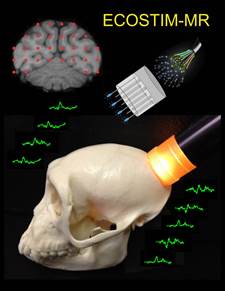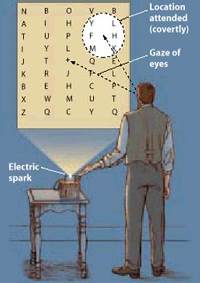W. Martin Usrey, Ph.D.
Brief Biography
 Dr. Usrey received his PhD in Neurobiology from Duke University and performed postdoctoral training at the Rockefeller University and Harvard Medical School.
Dr. Usrey received his PhD in Neurobiology from Duke University and performed postdoctoral training at the Rockefeller University and Harvard Medical School.
Dr. Usrey has been a member of the UC Davis faculty for 15 with a split appointment between the Department of Neurology and the Department of Neurobiology, Physiology & Behavior. During this time, he has served the University as Director of the UC Davis BRAIN Consortium—the campus response to President Obama’s Grand Challenge (the “BRAIN Initiative”), Chair of the Neuroscience Graduate Program, Vice-Chair of the Executive Committee for the College of Biological Sciences. He is also the Chair of the Department of Neurobiology, Physiology & Behavior.
Dr. Usrey has received the Presidential Early Career Award for Scientists and Engineers (PECASE), Ester A. and Joseph Klingenstein Award, the McKnight Scholar Award, the Alfred P. Sloan Fellowship Award, the UC Davis College of Biological Sciences Research Award, and the Scientific Innovations Award from the Brain Research Foundation. His research is supported by grants from the NIH and NSF.
Research Overview
Our conscious perceptions and cognitive functions depend critically on the neural computations performed by cortical circuits—the network of connections made by neurons in the cerebral cortex. In the healthy brain, networks of neural circuits play an important role in arousal, learning and memory, and attention. Accordingly, dysfunction of these circuits lies at the heart of many cognitive disorders, including those that accompany Alzheimer’s Disease, attention deficit disorder, autism, obsessive compulsive disorder and schizophrenia. Although the cerebral cortex is known to rapidly shift its network properties to meet behavioral and cognitive demands, we know little about the neural mechanisms that underlie network dynamics.
The long-term goal of the Usrey laboratory is to understand the functional properties of neural circuits that interconnect cortical and subcortical structures and the relationship between cell physiology, circuit activity, behavior and perception.
Using an arsenal of techniques that includes molecular phenotyping of identified cells, single and multielectrode recordings from anesthetized and behaving animals, optogenetic manipulation of neuronal activity, and fMRI, the Usrey laboratory is discovering how sensory information is established and encoded in brain activity, as well as the mechanisms employed by the brain for communicating information dynamically from one level to the next.
The Obama BRAIN Initiative
(Brain Research through Advancing Innovative Neurotechnologies)
 “….significant breakthroughs in how we treat neurological and psychiatric disease will require a new generation of tools to enable researchers to record signals from brain cells in much greater numbers and at even faster speeds. This cannot currently be achieved, but great promise for developing such technologies lies at the intersections of nanoscience, imaging, engineering, informatics, and other rapidly emerging fields of science and engineering.”
“….significant breakthroughs in how we treat neurological and psychiatric disease will require a new generation of tools to enable researchers to record signals from brain cells in much greater numbers and at even faster speeds. This cannot currently be achieved, but great promise for developing such technologies lies at the intersections of nanoscience, imaging, engineering, informatics, and other rapidly emerging fields of science and engineering.”
- White House Office of the Press Secretary
Research Program Details
Current research projects are focused on determining (1) how sensory information is processed and transmitted within and between brain areas, (2) the cellular and circuit mechanisms that mediate the effects of spatial attention on visual processing, (3) the role of feedback pathways for vision, (4) the relationship between neural activity and visual perception, and (5) the molecular, cellular, and circuit mechanisms that establish parallel processing streams in the prenatal retina.
Using an arsenal of techniques that includes molecular phenotyping of identified cells, single and multielectrode recordings from anesthetized and behaving animals, optogenetic manipulation of neuronal activity, and fMRI, the Usrey laboratory is discovering how sensory information is established and encoded in brain activity, as well as the mechanisms employed by the brain for communicating information dynamically from one level to the next.
Covert Visual Spatial Attention:

"These experiments demonstrated... that by a voluntary kind of intention, even without eye movements… one can concentrate attention on the sensation from a particular part of our peripheral nervous system and at the same time exclude attention from all other parts.”
- Herman Von Helmholtz (1896)

